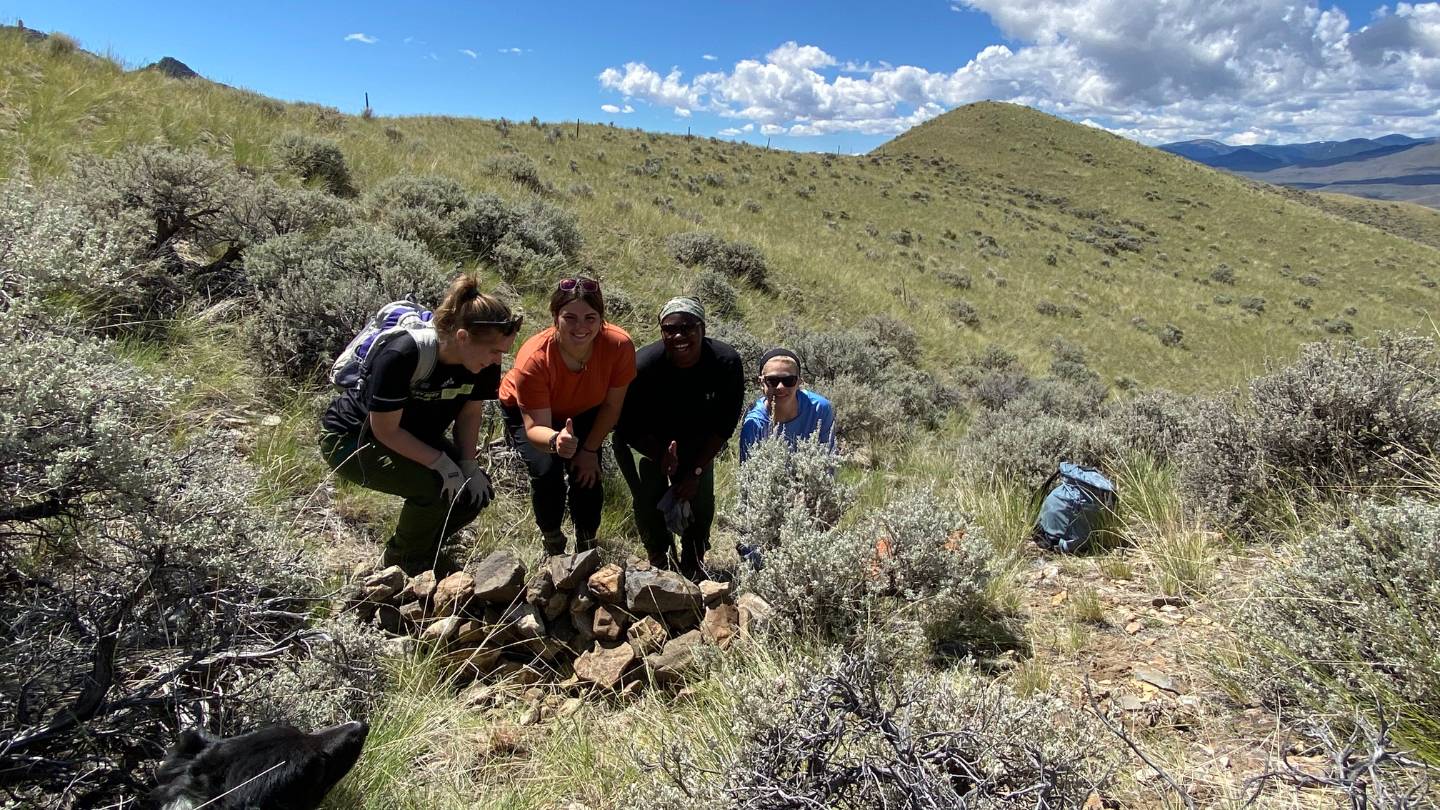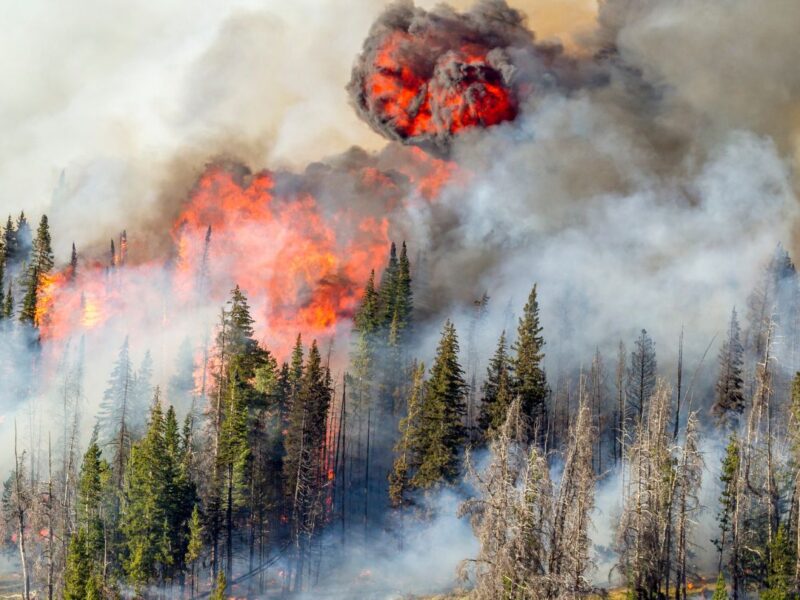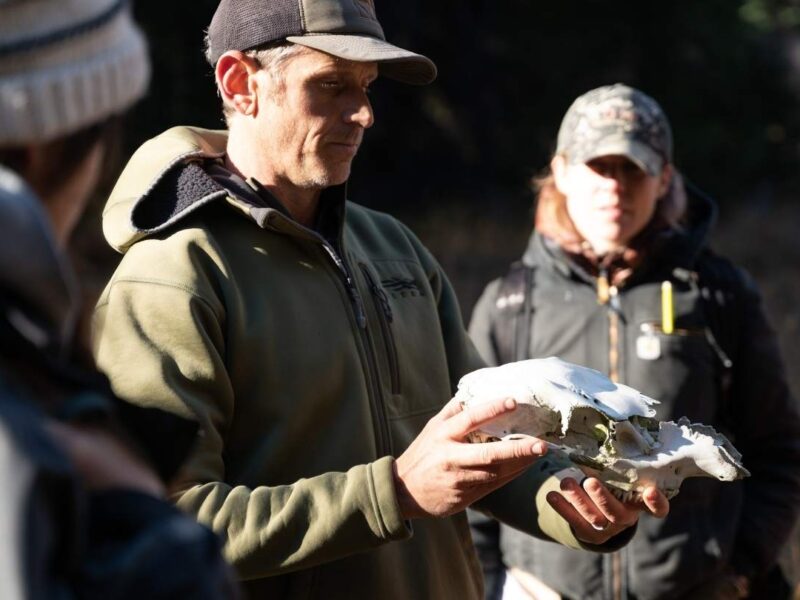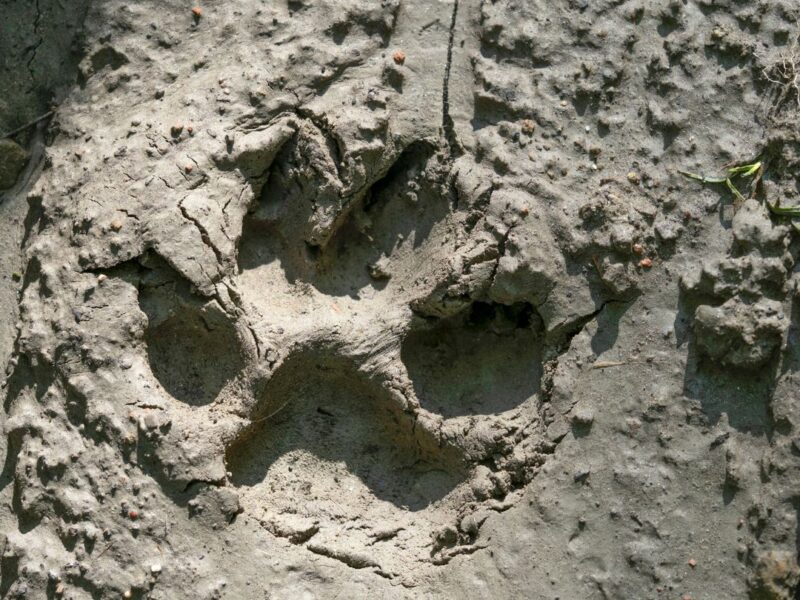Teaching ancient water capture techniques to the next generation
The aroma of sun-warmed-sagebrush permeates the air on a bright day in mid-June. Chatter and laughter ring up the sides of two gulches on the face of a dormant volcano. Through my viewfinder, puffy clouds frame each team of students as they collect rocks and fit them together to form walls that stretch from one side of the gully to another.
As I photograph the groups, I experience a certain amount of good-natured schadenfreude. I know from experience that the task of digging out large rocks from the sides of these hills to stack into semi-permeable rock walls will start to wear on you in an hour or two. But for now, these students are happily going about an activity that I’m nearly certain was not only a punishment but also a technique of my dad’s to tire my brother and I out on days when we were particularly rambunctious.
The students are part of the Wild Rockies Field Institute, a program which allows young adults to earn college credits in exchange for real world experience. These students are enrolled in the 42-day “Wild Rockies: Conservation Across Boundaries” program.
An ancient technique brought into the present
I trek back-and-forth between the two teams, asking questions about technique, placement, and spacing while trying not to give too much away. This is a learning experience after all.
I feel as if I’m stepping into my father’s shoes, all those years ago, as I egg each unit on, telling them that the other is farther ahead, or building nicer looking walls. I think both sides catch on pretty quickly, but they play along, asking conspiratorially for intel on the size, construction, and number of walls on the other side of the hill.
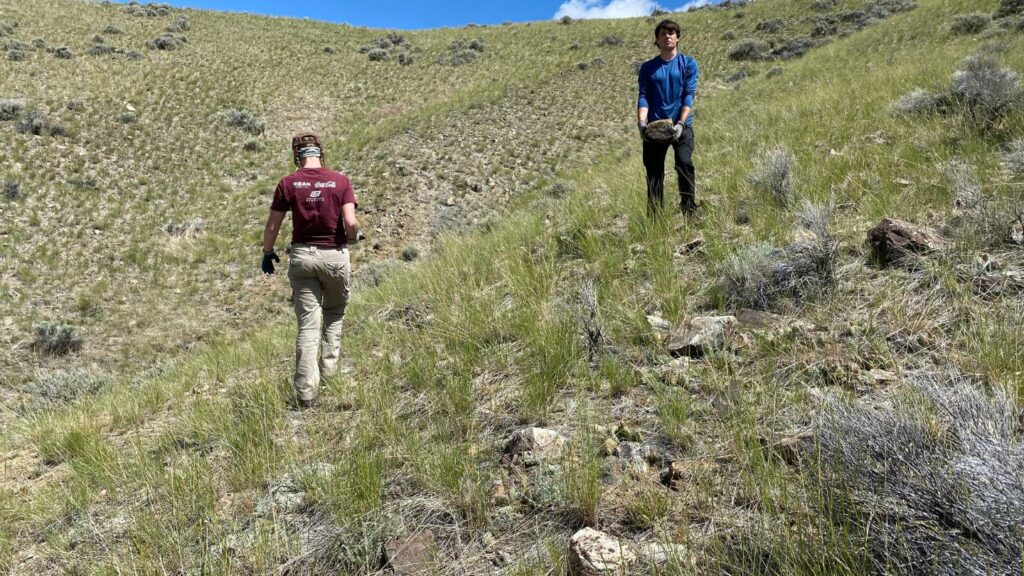
The walls they are building are part of a project my father instituted when I was a pre-teen. These walls (called rock weirs), will help slow the flow of gully washers (flash floods triggered by violent rainstorms during the summer monsoon season) that erode the thin and delicate soil on this mountain. That thin soil provides a home to drought-resistant species like cacti, native grasses, forbs, and a whole host of kaleidoscopic, nearly-neon lichens. The weirs not only slow erosion, they slow and spread the runoff, creating time for these increasingly rare bursts of moisture to properly sink into the ground and nurture the plants, rather than ripping them downstream into the Big Hole River in a raging torrent.
What’s typical?
The students are deeply excited to be here. They talk about their journeys, their passion for nature and the environment. During a lull in the conversation one instructor voices something I’ve heard a lot over the years. “Your Dad isn’t really a typical rancher is he?” And I respond the way I always do: I say “Yeah!” because of course my dad isn’t typical. He’s special: he’s good at his job; he’s in touch with the land and the native species. (If you ever meet him, don’t ask him about lichen or native grasses unless you really want to hear about lichen and native grasses. You’ve been warned). He reads his grandparents and great-grandparents diaries to get insight into how the weather, flora, fauna, and land have changed over the past century and a half; he has a fantastic gut instinct for weather and animal movement patterns, wildlife and livestock; he is constantly innovating, coming up with new ways to make this ranch work and to help the land be healthy and prosper.
So of course that was my answer, but I’m not sure that is entirely true. I can think of a half dozen examples of people in agriculture that I know personally who are as familiar with the land as my dad, more who know their native plants and grasses and still more who are passionate about wildlife. I can’t really speak to the rest of it because there are certain things you just can’t know about a person until you’ve worked sheep with them (trust me).
Seeing is believing
I had to cut out before the crews wrapped up for the day to finish some ranch chores, and take care of a friend’s dog. But as I left the happy bunch, still piling their rocks, promising to let them help with some lamb docking early the next morning, I couldn’t help but reflect on the storm the summer after my brother and I had built our own set of weirs. My dad corralled both of his soggy near-teenagers into the truck (not an easy task) and drove us up the back road to check on the results. The gully up the hill from our project was directing a torrent of rushing water, the color of chocolate milk, into a fast narrow path which pushed along a frothy flotsam of uprooted grass and cacti and cut a deep trench into the road. In contrast, our weirs created a leisurely cascade of translucent water leaving organic matter and fine soils behind. I’ll have to take some pictures to send to this crew after the next big storm so they can see the difference they made.


